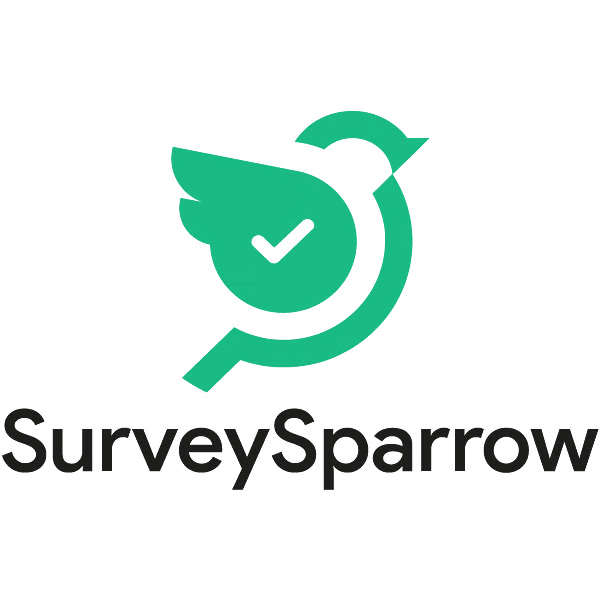15 Detailed Steps On How to Start a NonProfit Organization the Right Way
Written by Glenna Gonzalez, Professional Marketer and Public Relations

Starting a nonprofit organization is an endeavor that goes beyond the realm of conventional business ventures.
It involves a passionate commitment to a cause, a vision for positive change, and a desire to make a lasting impact on the community or the world at large.
Let’s navigate the intricate process of establishing a nonprofit, from defining your mission and garnering community support to navigating legal intricacies and securing essential resources.
Whether you are driven by a deep-seated passion for social justice, environmental sustainability, or any other meaningful cause, this exploration into the realm of nonprofit creation aims to be a compass, guiding you through the rewarding yet challenging terrain of transforming your vision into a purpose-driven organization.
1. Define Your Mission and Purpose
Defining the mission and purpose of your nonprofit is a critical foundational step that shapes the identity and direction of your organization.
Start by clearly identifying the social issue or cause your nonprofit aims to address.
Consider the specific needs or gaps in your community that your organization can effectively fill.
Your mission statement should succinctly communicate the overarching goal and values of your nonprofit.
Take the time to conduct thorough research to understand the root causes and complexities of the issue you’re addressing. Engage with potential beneficiaries, community members, and stakeholders to gain insights into the challenges they face.
This grassroots approach ensures that your mission is grounded in a genuine understanding of the community’s needs. Additionally, analyze existing initiatives and nonprofits working in the same or related areas.
Identify what sets your organization apart and how you can complement or collaborate with existing efforts.
Crafting a compelling mission statement and conducting thorough research lay the groundwork for a nonprofit that is purpose-driven and well-informed.
2. Research and Planning
Research and planning are integral components of building a successful nonprofit organization.
This process involves gathering data, interviewing stakeholders, and analyzing existing research to ensure your nonprofit’s mission aligns with real and pressing needs.
What touches your heart- what hurts and what do you notice about what help others are needing that you can provide through your organization.
Once you’ve identified the issues, develop a strategic plan outlining your organization’s goals, objectives, and strategies to achieve them. Consider the long-term sustainability of your programs and how they align with your mission.
A well-thought-out business plan serves as a roadmap for your nonprofit’s growth and impact.
It should include a budget, a timeline for program implementation, and methods for assessing and measuring success.
As you plan, also explore potential sources of funding.
This could involve researching grant opportunities, developing a donor engagement strategy, and considering various fundraising methods.
A solid plan attracts supporters and provides a clear framework for your organization’s development, ensuring that your nonprofit is effective and resilient in addressing the identified needs.

3. Name Your Nonprofit
Choosing a name for your nonprofit is a crucial step that goes beyond mere identification.
The name should reflect the essence of your organization, conveying its mission and values.
It’s advisable to pick a name that is unique, memorable, and easy to spell. Before finalizing the name, conduct a thorough check to ensure its availability and to avoid any potential legal conflicts with existing entities.
This may involve searching business registries, domain names, and trademark databases.
Once you’ve selected a name, consider securing the domain for your nonprofit’s website.
Having an online presence is essential for outreach, fundraising, and communication.
Choose a domain name that aligns with your organization’s name and is easy for supporters to find.
By investing time in selecting an effective and meaningful name, you’re laying the groundwork for a strong brand identity that can resonate with your target audience and leave a lasting impression.
4. Recruit a Board of Directors
Having a board of directors will play a pivotal role in guiding the strategic direction of your nonprofit.
When recruiting board members, seek individuals who are passionate about your cause, bring diverse perspectives, and possess skills that complement the needs of your organization.
Look for a mix of expertise in areas such as finance, law, marketing, and the specific field your nonprofit operates in.
A diverse board ensures a well-rounded approach to decision-making and problem-solving.
Establish clear expectations for board members, including time commitments, fundraising responsibilities, and involvement in key decisions.
Foster open communication and collaboration among board members to create a positive and effective governance structure.
Regularly assess the performance of the board and provide opportunities for training and development.
A strong and committed board not only provides guidance and oversight but also enhances the credibility and effectiveness of your nonprofit, attracting support from stakeholders and potential donors.

5. Draft Bylaws
Drafting bylaws is a critical step in the organizational process of a nonprofit, as they serve as the internal operating rules and regulations.
Bylaws typically cover various aspects of the organization, including the roles and responsibilities of board members, decision-making processes, membership requirements (if applicable), and the procedures for meetings. Ensure that your bylaws align with the legal requirements of the jurisdiction in which your nonprofit is registered.
Additionally, bylaws should be flexible enough to accommodate changes as the organization evolves.
When drafting bylaws, involve key stakeholders, such as board members and legal advisors, to ensure a comprehensive and inclusive document.
Clearly outline your organization’s purpose, the board’s structure, and the mechanisms for amending the bylaws.
Transparency is key – make the bylaws accessible to all stakeholders, and consider periodic reviews to ensure they remain relevant and effective.
Well-crafted bylaws guide decision-making, conflict resolution, and overall governance, contributing to the smooth operation and longevity of your nonprofit.
6. Legal Structure
Having the right legal structure is a crucial decision that affects your nonprofit’s operations, governance, and tax implications.
In the United States, many nonprofits opt for 501(c)(3) status, which provides federal tax exemption for charitable organizations, allowing donors to make tax-deductible contributions and opens up opportunities for grants.
To obtain 501(c)(3) status, submit Form 1023 to the Internal Revenue Service (IRS) and adhere to the guidelines.
Before settling on a legal structure, carefully consider the advantages and disadvantages of each option, such as 501(c)(4) for social welfare organizations or 501(c)(6) for business leagues.
Consult with legal professionals who specialize in nonprofit law to ensure compliance with local, state, and federal regulations. Choosing the right legal structure, in the beginning, can streamline your organization’s ability to achieve its goals and navigate legal requirements effectively.
It’s a foundational step that establishes the framework for your nonprofit’s long-term success.

7. Incorporate Your Nonprofit
Incorporating your nonprofit is a legal process that formalizes its existence as a separate legal entity.
Fill out the paperwork with the appropriate government agency, usually the Secretary of State or a similar entity depending on your country’s regulations.
The primary document filed is the articles of incorporation, which typically includes essential information such as the organization’s name, purpose, location, and structure.
By incorporating, your nonprofit gains legal recognition, limited liability for its founders and members, and the ability to enter into contracts.
Once your nonprofit is incorporated, it obtains a legal status that is separate from its founders, providing a level of protection for individuals associated with the organization.
This legal separation is crucial for the liability protection of board members and officers.
Additionally, incorporation is often a prerequisite for obtaining tax-exempt status, a key consideration for nonprofits seeking to attract donors.
Be sure to adhere to the regulations and requirements of your jurisdiction, and consider seeking legal advice to navigate this process smoothly.
8. Apply for Tax-Exempt Status
After incorporating, the next significant step is to apply for tax-exempt status, particularly if you’re in the United States.
Most nonprofits aim for 501(c)(3) status, which grants federal tax exemption for charitable organizations.
To achieve this status, you’ll need to submit Form 1023 or, if eligible, the streamlined Form 1023-EZ to the Internal Revenue Service (IRS).
This application provides detailed information about your organization, including its purpose, programs, finances, and governance structure.
Obtaining tax-exempt status is crucial for several reasons.
It allows your nonprofit to receive tax-deductible donations, making it more appealing to potential supporters.
Additionally, it opens the door to various grant opportunities and exempts your organization from certain federal income taxes.
The process can be complex, so seek the help of a professional or utilize resources provided by the IRS to ensure accuracy.
Once approved, your nonprofit can operate with the added benefit of tax-exempt status, enhancing its financial sustainability and credibility within the community.

9. Obtain Necessary Licenses and Permits
Be sure to obtain the appropriate licenses and permits in the establishment of a nonprofit and ensure that your organization complies with local, state, and federal regulations.
The licenses and permits required may vary based on the nature of your nonprofit’s activities, location, and services.
Common examples include business licenses, fundraising permits, and any specialized permits related to your organization’s specific services or programs.
Conduct thorough research and liaise with relevant government agencies to identify the necessary licenses.
This may involve contacting city or county offices, state departments, or industry-specific regulatory bodies.
By completing the requirements, avoid legal complications or disruptions to your nonprofit’s operations.
Maintaining compliance ensures your organization’s legal standing and contributes to building trust with donors, partners, and the community.
10. Create a Fundraising Plan
Devising a fundraising plan is highly necessary for the financial sustainability of your nonprofit.
This plan should outline your organization’s strategies for generating revenue, including individual donations, grants, sponsorships, and events. Start by identifying potential funding sources and creating a diversified approach to minimize dependence on any single revenue stream.
Consider the timing and seasonality of your fundraising efforts, aligning them with key events, holidays, or grant application cycles.
Engage your board, staff, and volunteers in the fundraising process, clearly defining roles and responsibilities.
Establish measurable fundraising goals and monitor progress regularly to track the effectiveness of your strategies.
A well-designed fundraising plan also includes a budget that outlines anticipated expenses related to fundraising activities.
Digital platforms and social media can increase outreach and connect with potential donors.
Remember to express gratitude and recognition to your supporters, cultivating long-term relationships to sustain your nonprofit.
Regularly evaluate and adjust your fundraising plan based on performance and changing circumstances to ensure the ongoing financial health of your organization.

11. Set Up Financial Systems
Setting up robust financial systems is a cornerstone of nonprofit management that promotes accountability, transparency, and long-term sustainability.
Begin by establishing a dedicated accounting system to meticulously track your organization’s income and expenses.
Utilize specialized nonprofit accounting software that can facilitate fund tracking, grant management, and the generation of comprehensive financial reports.
This not only ensures accuracy in financial record-keeping but also streamlines the auditing process and helps in demonstrating accountability to stakeholders.
Implementing clear financial policies and procedures is crucial.
These policies should delineate how funds are managed, the process for approving expenses, and guidelines for financial reporting.
Review and update policies for any changes in your organization’s structure or financial practices.
As your nonprofit grows, consider engaging a certified accountant or financial consultant who specializes in nonprofit finance to provide guidance on compliance with accounting standards and tax regulations.
Maintaining meticulous financial systems ensures legal compliance and builds trust among donors and partners, reinforcing your organization’s credibility.

12. Develop a Strong Online Presence
In the digital age, establishing a robust online presence is indispensable for nonprofits seeking to connect with their target audience, raise awareness, and mobilize support.
Creating a professional and more sophisticated website clearly communicates your mission, programs, and impact. Ensure the website is mobile-friendly and incorporates secure donation portals for online giving.
Leverage compelling visuals, success stories, and multimedia content to engage visitors and convey your organization’s unique value. Regularly update the website with current information, events, and achievements to maintain relevance.
Social media platforms are powerful tools for expanding your reach and building a community around your cause.
Establish and maintain active profiles on platforms such as Facebook, Twitter, Instagram, and LinkedIn.
Share updates, engage with your audience, and promote fundraising campaigns. Incorporate a content calendar to ensure a consistent and cohesive online presence. Running targeted social media advertising campaigns may amplify your message and attract new supporters if done properly.
A strong online presence enhances visibility and provides a platform for transparent communication, enabling your nonprofit to foster meaningful connections with supporters, donors, and partners.
13. Build Relationships and Partnerships
Building relationships and partnerships is a fundamental aspect of nonprofit success, enabling your organization to extend its reach, pool resources, and amplify its impact.
Start by identifying potential collaborators, including other nonprofits, businesses, government agencies, and community groups that share common goals or have complementary missions.
Attend networking events, workshops, and conferences to connect with like-minded organizations and individuals.
Establishing a collaborative mindset from the outset fosters a sense of community and allows for collective problem-solving.
Effective relationship-building extends beyond other organizations to include your community, volunteers, donors, and beneficiaries.
Cultivate a strong sense of engagement and involvement among these groups.
Regularly communicate with your supporters, expressing gratitude for their contributions and updating them on your organization’s achievements.
Building relationships requires genuine and transparent communication.
Develop a donor stewardship plan to ensure that your supporters feel valued and connected to the impact of their contributions.
By nurturing relationships and partnerships, your nonprofit can leverage collective strengths, share resources, and foster a sense of shared responsibility for the success of your mission.
Here are some professional nonprofit associations that provide helpful information to the nonprofit sector:
- GuideStar
- National Council of Nonprofits
- BoardSource
- Young Nonprofit Professionals Network (YNPN)
- Independent Sector

14. Implement Programs and Services
Once your nonprofit is established and your foundational elements are in place, it’s time to implement the programs and services outlined in your business plan.
Begin by prioritizing initiatives based on their potential impact and alignment with your mission.
A detailed implementation plan that includes timelines, milestones, and responsible parties for each program or service would be key.
Be realistic about the resources required and ensure that your organization has the capacity to deliver on its commitments.
Engage with your target audience and beneficiaries throughout the implementation process. Solicit feedback, make adjustments as needed, and continuously assess the effectiveness of your programs.
Think about clear metrics and key performance indicators (KPIs) to measure the impact of your initiatives.
Regularly communicate your progress and outcomes to your stakeholders, demonstrating transparency and accountability.
Successful program implementation not only advances your mission but also enhances your credibility, attracting more support and positioning your nonprofit as a reliable force for positive change.
15. Evaluate and Adjust
Continuous evaluation and adjustment are vital aspects of nonprofit management, ensuring that your organization remains effective, adaptive, and aligned with its mission over time.
Establish a systematic approach to evaluating the impact of your programs and services.
Define specific metrics that align with your organization’s goals and regularly collect and analyze data.
This might include quantitative data such as the number of beneficiaries served, funds raised, or program outcomes, as well as qualitative data gathered through surveys, interviews, or testimonials.
Actively seek feedback from stakeholders, including staff, board members, volunteers, donors, and beneficiaries, to gain diverse perspectives on your organization’s performance.
Overall, managing a nonprofit isn’t as straightforward as it may seem from the outset but it can be fulfilling if there’s a central mission that you want to accomplish.
Nonprofits are a strong force for good within our society, and we are glad to be able to provide more people with the resources to allow them to develop their own organizations that can further just causes that need much more attention within our world.
Stay tuned to our blog for more information on business know-how and tips and tricks!





























